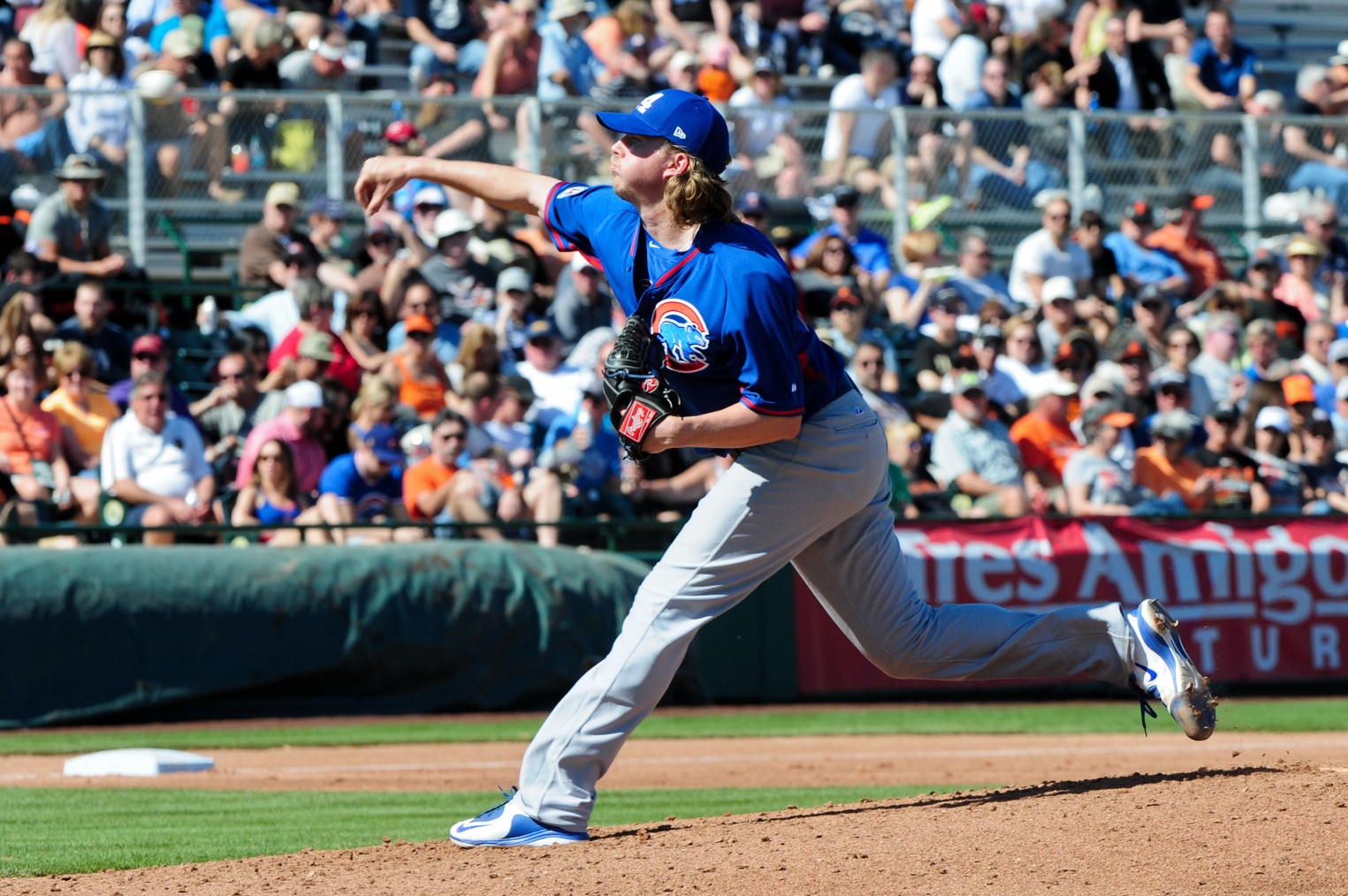Arizona’s brick red landscape is paved with unfulfilled potential and broken promises; the kinds of stories that you read about years later and wonder what the hell you were thinking exactly. Arizona is also home to the types of stories that make you want to believe in projection, plus bat speed, elite fastballs, and breaking balls from hell. The Arizona Fall League is designated as the graduate school of Major League Baseball. It’s the last, great challenge as prospects are thrown into the mixer and face other top talent on a day-in, day-out basis. The Cubs have graduated an impressive amount of top talent, and yet they’ve still managed to send an interesting collection of prospects to the fall league. Let’s introduce you to the Cubs representatives on the Mesa Solar Sox.
Corey Black RHP – Prospect writers have been hanging “reliever” on Corey Black for quite some time now. His first time coming out of the pen for the Cubs has been a unmitigated disaster from a production standpoint, he’s carrying a 7.71 ERA and a 1.72 WHIP in relief this year. His mechanics—specifically the high-effort delivery—preclude a starting role, but there’s still hope and potential that he can harness his hard fastball/slider combination to salvage a relief career.
David Garner RHP – Undersized paired with inconsistent mechanics is usually a bad combination when it comes to projecting out starting pitchers. Garner has a fastball that tickles 94 and a slider that can flash, but to this point his command hasn’t let him fully tap into the potential of his two pitches. His quick arm action and biting slider offers hope as a reliever, if he can ever harness his stuff.
Pierce Johnson RHP – I’ve written about Pierce Johnson a lot in the Young Cubs recaps. He has the stuff to be a mid-rotation starter, but the combination of “healthy with good enough command” hasn’t materialized for the follically-blessed righty. If the cutter fully develops and he finds even fringe-average command he’s going to be a very useable arm for the Cubs.
Rob Zastryzny LHP – Pierce Johnson’s hair twin features a low-90s fastball with some cut and a changeup that flashes plus when it’s working lower in the velocity band. That’s all well and good for a deceptive lefty, but the thing holding him back is the lack of a breaking pitch to vary the looks hitters get on his stuff.
Cael Brockmayer C – He’s flashed a strong arm in the past and has shown some acumen for defense, but his bat hasn’t grown enough to make him much more than an organizational soldier.
Willson Contreras C – Cubs Den’s John Arguello first introduced me to the toughest SOB I’ve seen play the catching position way back in 2013. During a play at the plate, I saw Contreras arm bar a Twins farmhand so hard one time they had to call the ambulance out for the poor Twins guy. I’ve seen the athleticism and I’ve heard glowing reports of his baseball skills starting to catch up with his raw ability. I’ve heard “borderline 7 runner” thrown on the man, which when paired with his defensive profile sounds downright irresponsible. What I’m saying here is that Contreras has developed into an urban legend, the faint outline of which we can see painted with stats and second-hand anecdotes. The abstractions with Contreras will be clarified as he’ll be under the microscope in the AFL.
Congrats John, you called the hell out of it.
Jeimer Candelario 3B – Candelario’s stock has oscillated wildly during his professional career. The now-skinny Candelario has produced well across two levels. His swing isn’t conducive to over-the-fence power production, but he can attack the gaps with a strong line-drive swing. Candelario’s defense is still up for debate, and ultimately I still don’t see enough hit to warrant a first-division starter.
Mark Zagunis C/OF – It’s not a good bet that Zagunis will catch again, it just wasn’t working out back there. His hit tool is limited despite a good approach and solid on-base skills.
Lead photo courtesy of Matt Kartozian-USA TODAY Sports
